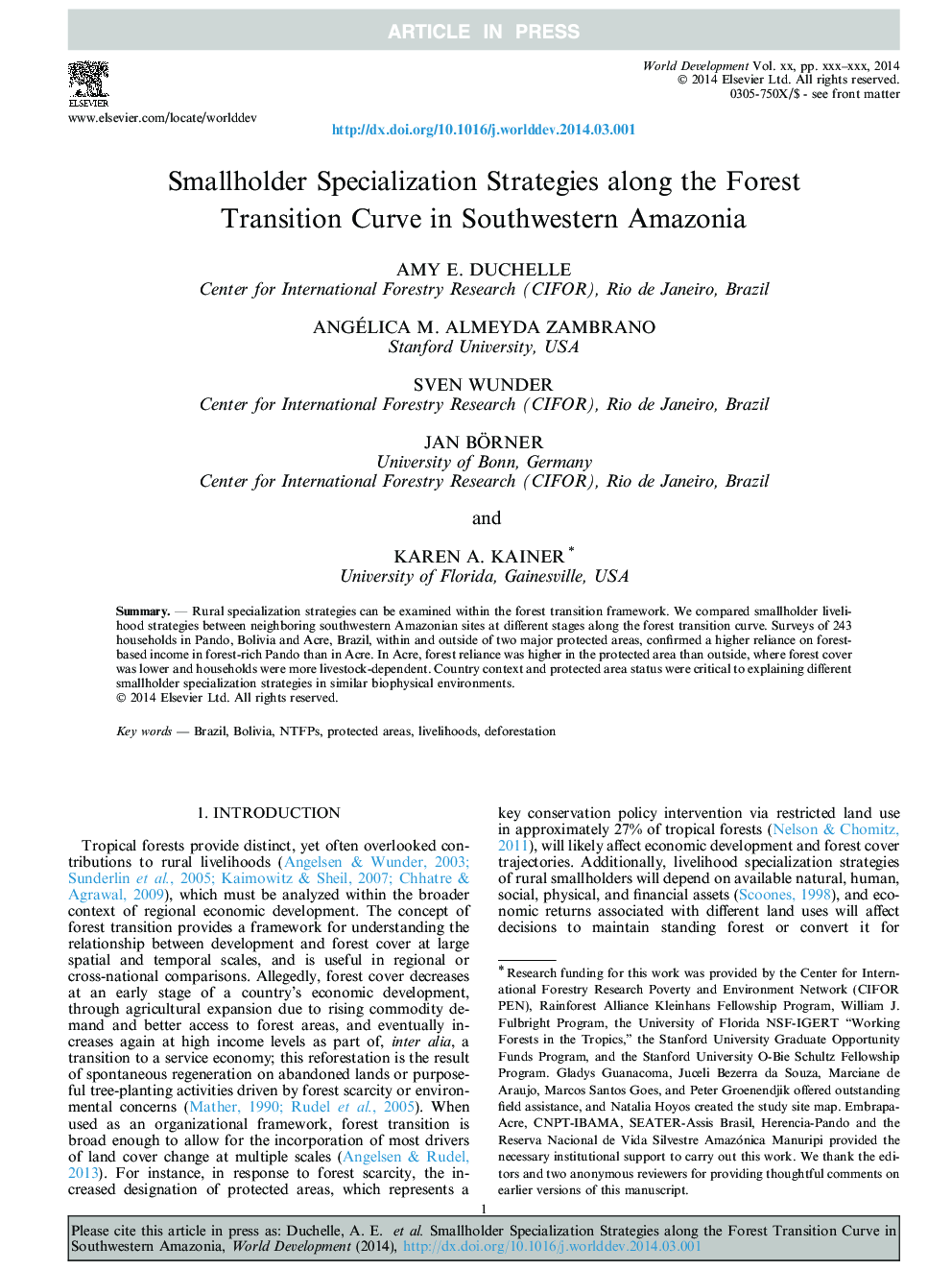| Article ID | Journal | Published Year | Pages | File Type |
|---|---|---|---|---|
| 10484705 | World Development | 2014 | 10 Pages |
Abstract
Rural specialization strategies can be examined within the forest transition framework. We compared smallholder livelihood strategies between neighboring southwestern Amazonian sites at different stages along the forest transition curve. Surveys of 243 households in Pando, Bolivia and Acre, Brazil, within and outside of two major protected areas, confirmed a higher reliance on forest-based income in forest-rich Pando than in Acre. In Acre, forest reliance was higher in the protected area than outside, where forest cover was lower and households were more livestock-dependent. Country context and protected area status were critical to explaining different smallholder specialization strategies in similar biophysical environments.
Related Topics
Social Sciences and Humanities
Economics, Econometrics and Finance
Economics and Econometrics
Authors
Amy E. Duchelle, Angélica M. Almeyda Zambrano, Sven Wunder, Jan Börner, Karen A. Kainer,
